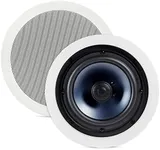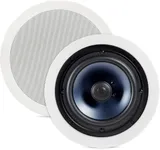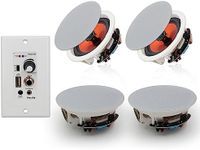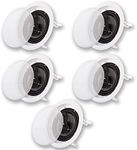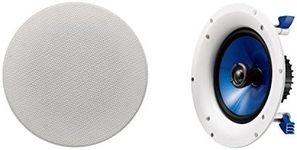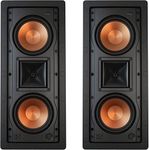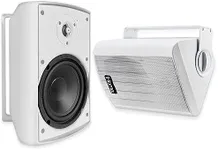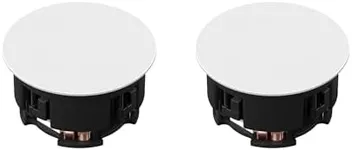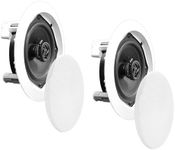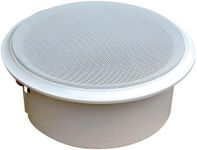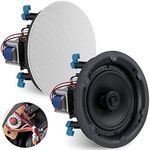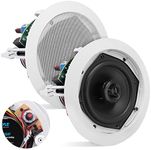Buying Guide for the Best Home Theater Ceiling Speakers
Choosing the right home theater ceiling speakers can significantly enhance your audio experience, providing immersive sound without taking up floor space. To make an informed decision, it's important to understand the key specifications and how they align with your needs. Here are the main factors to consider when selecting ceiling speakers for your home theater setup.Speaker SizeSpeaker size refers to the diameter of the speaker cone, typically measured in inches. This spec is important because it affects the speaker's ability to produce different frequencies. Larger speakers (8 inches or more) can produce deeper bass and are suitable for larger rooms, while smaller speakers (6.5 inches or less) are better for mid and high frequencies and work well in smaller spaces. Choose a size that matches your room size and the type of sound you prefer.
Power HandlingPower handling indicates the amount of power (measured in watts) a speaker can handle from an amplifier without being damaged. This is important for ensuring your speakers can handle the volume levels you desire. Speakers with higher power handling (100 watts or more) are suitable for larger rooms and louder volumes, while lower power handling (below 100 watts) is adequate for smaller rooms and moderate listening levels. Match the power handling to your amplifier's output and your listening habits.
Frequency ResponseFrequency response measures the range of frequencies a speaker can reproduce, typically given in Hertz (Hz). This is important for understanding the speaker's ability to deliver a full range of sound. A wider frequency response (e.g., 40Hz-20kHz) means the speaker can produce both deep bass and high treble, providing a more balanced sound. For home theater use, look for speakers with a broad frequency response to ensure you capture all the details in movies and music.
SensitivitySensitivity, measured in decibels (dB), indicates how efficiently a speaker converts power into sound. This is important because higher sensitivity speakers (90 dB or more) require less power to produce the same volume as lower sensitivity speakers (below 90 dB). If you have a lower-powered amplifier, choose higher sensitivity speakers to achieve better sound levels without overloading your system.
ImpedanceImpedance, measured in ohms, refers to the resistance a speaker offers to the current from the amplifier. This is important for matching your speakers to your amplifier. Most home theater speakers have an impedance of 8 ohms, which is compatible with most amplifiers. However, some speakers have lower impedance (4 or 6 ohms), which can draw more power and may require a more robust amplifier. Ensure your amplifier can handle the impedance of the speakers you choose.
Installation and PlacementInstallation and placement refer to how and where the speakers are mounted in your ceiling. This is important for achieving optimal sound distribution. Consider speakers with adjustable tweeters or pivoting drivers to direct sound towards the listening area. Also, ensure the speakers come with clear installation instructions and necessary hardware. Think about the layout of your room and where you will be sitting to determine the best placement for your speakers.
Build Quality and MaterialsBuild quality and materials affect the durability and sound quality of the speakers. This is important for ensuring long-lasting performance and good sound reproduction. Look for speakers with high-quality materials like rubber surrounds and metal or Kevlar cones, which offer better sound and longevity. Consider the environment where the speakers will be installed; for example, if they will be in a humid area, choose speakers with moisture-resistant materials.
